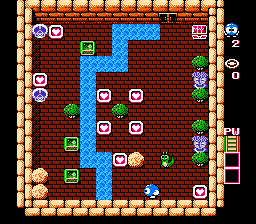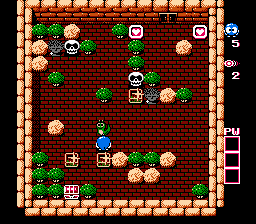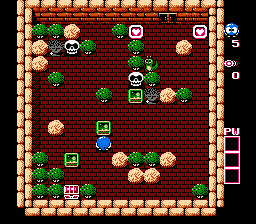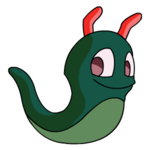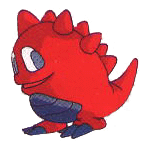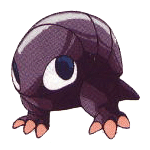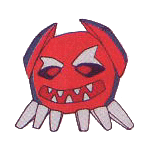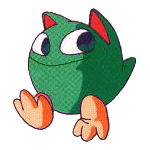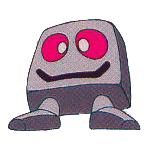| Eggerland | |
|---|---|
| Developer(s) | HAL Laboratory |
| Publisher(s) | HAL |
| Year introduced | 1986 |
| Genre(s) | Puzzle |
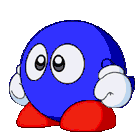
The Eggerland series made its debut back in 1985 when HAL Laboratory (of Japan) released Eggerland Mystery for the MSX Home Computer. The game starred an egg-like character named Lolo whose significant other, Lala, was captured by the evil King Egger of Eggerland and who had to traverse a complicated series of labyrinths in order to save her, being faced with a plethora of enemies along the way. As the series progressed, eventually making its way to the Famicom Disk System in 1987 and then to the Nintendo Entertainment System in North America and Europe in 1989, new enemies and challenges were introduced.
The series is often complicated to follow because there are many titles that appear only in Japan while others appear only outside of Japan. The full series consists of 12 games:
- 9 games were developed and released in Japan, but not in North America.
- 3 games were developed and released in the USA, but not in Japan.
- Europe saw the release of 3 Japanese games and of the 3 American games.
Actually, the American Adventures of Lolo 1 & 2 are compilations of stages from the 3rd and 4th Japanese Eggerland. Further complications: Adventures of Lolo is the title (original or localized) of three different games in the series, and Adventures of Lolo 2 is the title of two different ones.
The Adventures of Lolo 3 (1991, NES) was the last title released in North America while The Adventures of Lolo (1995, Game Boy and Super Game Boy) was the last title released in Europe, but in Japan Eggerland Episode 0: The Quest of Lala was released in 1996 for Windows as a demo for the 2000 release of Revival! Eggerland, also for Windows.
Eggerland releases[edit | edit source]
The following is a list of the titles released in the Eggerland series. In the table below, every title links to a different video game guide page. Precedence is given to English titles, when available.
The Famicom Disk System game Eggerland is a port of the MSX game Eggerland 2, with upgraded graphics and other minor changes.
The Japanese Adventures of Lolo 2 and the Western Adventures of Lolo 3 have identical introductions and overworlds, but completely different stages.
Additionally, there were several more titles released only in Japan and which fans must import should they wish to play them. The last two titles were released as freeware, and are available for download.
| Original/Japanese title | Localized/English title | Year | Genre | Systems |
|---|---|---|---|---|
| Eggerland Mystery | Eggerland Mystery | 1985 | ||
| 迷宮神話 Labyrinth Myth |
Eggerland 2 | 1986 | Labyrinth | |
| Eggerland 迷宮の復活 Eggerland: Revival of the Labyrinth |
- | 1988 | Labyrinth | |
| Eggerland 創造への旅立ち Eggerland: Departure to Creation |
- | 1988 | ||
| Adventures of Lolo (Japan) | - | 1990 | ||
| Adventures of Lolo II (Japan) | - | 1991 | ||
| ロロの大冒険 Lolo's Great Adventure |
Adventures of Lolo (Game Boy) | 1994 | ||
| Eggerland Episode 0: Quest of Lala | - | 1996 | Labyrinth | |
| 復活! Eggerland Revival! Eggerland |
Eggerland for Windows 95 | 2000 | Labyrinth | |
| Made in USA | ||||
| - | Adventures of Lolo | 1989 | ||
| - | Adventures of Lolo 2 | 1990 | ||
| - | Adventures of Lolo 3 | 1991 | ||
Nomenclature[edit | edit source]
While the series itself is called the Eggerland series, the games go by two different names depending upon which region they were generally released in. In Japan, the games are called Eggerland, except for the few titles which received global release. However, in Western nations these games are called The Adventures of Lolo, with the rare exception of the European release of the original Eggerland Mystery.
Pay attention to the differences in the nomenclature of the titles:
- the Western Adventures of Lolo and Adventures of Lolo 2 were not released in Japan: they are collections of stages from previous games;
- the Japanese Adventures of Lolo and Adventures of Lolo 2 were released in Japan only: their graphics, music and cutscenes were re-used in the Western Adventures of Lolo 2 and Adventures of Lolo 3, respectively, but they have almost completely different stages.
"Meikyuu Shinwa" and "Meikyuu Shima"[edit | edit source]
A puzzle video game unrelated to the Eggerland series but with many elements in common is Kickle Cubicle by Irem. Even its original Japanese title, Meikyuu Shima (lit. "Labyrinth Islands") resembles Meikyuu Shinwa (lit. "Labyrinth Myth"), the original title of Eggerland 2.
Story[edit | edit source]

Though each game has a unique story of its own, the series revolves around a world in which many different kingdoms exist, but which focuses mainly on the kingdoms of Eden Land and Eggerland. The original story goes that King Eden and his three daughters governed Eden Land and were blessed with peace and love, but one day a horde of monsters appeared and sought to make the beautiful country their own, attacking and kidnapping princess Lala in the process. Hope was not lost, however. The guardian of Eden Land, Edenah, confined the invaders to the dark depths of Eggerland and then, in order to deceive the monsters, changed her form into the Diamond Framers, divided her body into four parts, and sought a young man who could rescue her, finding Lolo. Lolo conquered the labyrinth, defeated the monsters, reunited the god, and rescued the princess, and the two married and lived happily ever after...
Yet, the monsters of Eggerland were never satisfied, and they would torment the two and future generations to come. The evil King Egger made several attempts to kidnap Lala and imprison her within the depths of his citadel, forcing Lolo to solve complex puzzles with horrifying monsters waiting to devour him along the way. Yet, time and time again Lolo would prove victorious and defeat Egger over and over again. On one occasion Egger turned the people of Edden Land into stone with a magical powder and both Lala and Lolo worked together to defeat his minions and his puzzles, but in the end, they proved victorious and defeated him. So, try and try as he might, Egger and his lineage have yet to defeat the people of Eden Land!
Main Characters[edit | edit source]
Lolo[edit | edit source]

Lolo is occasionally referred to as the prince/king of Eden Land but is generally portrayed as Lala's love. King Egger, in his attempts to have Eden Land for himself, constantly tries to tear the two apart, and therefore it is up to Lolo to fight his way through Eggerland, solving complex and mindboggling puzzles, and in the end, facing off with King Egger himself, saving Lala from certain doom. Whenever injustice is in the air, Lolo is there to answer the call!
Lala[edit | edit source]

Lala is portrayed as the princess/queen of Eden Land and Lolo's love interest. She is often kidnapped by the evil King Egger and it is often up to Lolo to rescue her from the evil "frog's" clutches. However, in later adventures, King Egger directly attacks the people of Eden Land and Lala sets out with Lolo and the two solve Egger's puzzles together and save their people from the clutches of evil.
King Egger[edit | edit source]
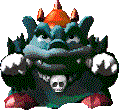
King Egger is also known as The Great Devil in the Western games. It was Egger who was jealous of Eden Land's great beauty, and so he led his monsters there to take it over and seize it for himself, though he did not count on Lolo's interference and opposition. However, King Egger doesn't give up easily. He cooks up many different schemes, much like the typical arch-fiend, and so he returns over and over again to kidnap Lala and wreak constant havoc on the innocent civilians of the Kingdom of Eden Land.
Gameplay[edit | edit source]
The basic gameplay of the series seems straightforward at first. Lolo/Lala is presented with a room that contains Heart Framers (Diamond Framers in early games) and a Jewel Box (or Key Box in early games), and when they collect all of the HF's the box will open and they can collect the item inside. While this sounds simple enough (and generally is for the first few rooms), it proves to be quite difficult due to the many different enemies present in the mazes as well as the various obstacles that they have to face (see the Monsters section).
Magic Shots[edit | edit source]
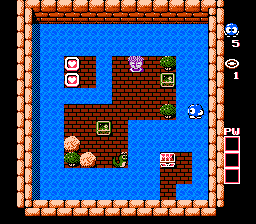
Lolo/Lala have the ability to pick up HF's that will give them two Magic Shots (these framers are often called Shot Framers, or SF's), and with these shots they can turn most enemies (and all, in the later games with help of the Crystal Framer) into eggs with one shot. While enemies are in the egg form they can be pushed (not pulled) around the level to block other enemies or to be moved out of the way. Additionally, they can be pushed into water and rode across to land on the other side (but only if there is a current present, which is only visible in later games). Enemies do not stay in their egg form forever, however, but after a few seconds the egg will begin to crack, and will eventually hatch. If Lolo/Lala uses two Magic Shots against an enemy, they will be blown off of the screen, but they will return within a few seconds (the length of time that they would normally stay within an egg). A warning for their return is given by a glowing square appearing where they will reappear. For most enemies, if Lolo/Lala stands on them when they appear they can simply walk off of them, but for Skulls or Almas (and later Medusa or Don Medusa) they will die if they occupy the same space (for information on Warp Holes, see that section).
Terrain[edit | edit source]

the Eggerland series features many different terrain, though the original games only had black floors and featured rocks, trees, and Emerald Framers as part of the movable terrain. However, this would change as the series progressed, and sand, grass, lava, and water would be introduced.
| Heart Framers
Heart Framers, or HF's, should be listed as part of the terrain because they do provide protection from enemies. Like the EF's, enemies are incapable of moving past an HF and are also incapable of harming Lolo/Lala with their projectile attacks through them. However, Lolo/Lala is incapable of moving an HF, and once collected it is gone and provides no more protection, yet can provide Magic Shots or other powers (see Powers section). |
| Emerald Framers
Emerald Framers, often abbreviated EF's, are movable blocks found in levels that usually are helpful in blocking and trapping enemies. Mobile enemies cannot move past EF's and enemies with projectile attacks cannot shoot through EF's. However, these blocks can sometime be the object of puzzles, as pushing them incorrectly can mess up a certain room and cause Lolo/Lala to be stuck in a room and need it to be Reset. |
| Crystal Framers
These types of blocks were introduced in the Windows titles (Eggerland Episode 0: Quest of Lala and Revival! Eggerland) and have two reflective sides and two non-reflective sides. If Lolo/Lala shoots one of the reflective sides with a Magic Shot, it will be reflected at a 90-degree angle, and using this technique they are capable of "egging" enemies such as Medusa and Don Medusa. |
| Rocks
Nothing can get past a rock. Additionally, no enemy is capable of shooting (killing Lolo/Lala with its glare, in the case of the Medusa/Don Medusa, or fire in the Gol's case) through a rock. |
| Trees
Trees keep all mobile enemies out, such as the Alma, Skull, Leeper, and Rocky. However, all enemies that are capable of killing Lolo/Lala with their gaze or by shooting them can do so through trees (such as the Medusa, Don Medusa, and Gol). |
| Treasure (jewel/key/raft) box
The Box is an interesting part of the terrain because while enemies are capable of attacking Lolo/Lala with their projectile attacks, it provides them with a safe-haven from mobile enemies. Moving enemies cannot pass through the Box while Lolo/Lala can, so if they are being chased, standing on the same space as the Box provides them with safety. |
| Water
Water is present in the early Eggerland games and can be crossed in several ways. Sometimes bridges already cross water, but if not, Lolo/Lala may receive a Bridge power-up by collecting several HF's, and if this is the case, then they can create a bridge one-unit in length across the water. Also, by using a Magic Shot, Lolo/Lala can turn enemies into eggs and push them into the water. If there is a current, they can ride these enemies across the water and onto the land on the other side. Sometimes there are bridges that Lolo/Lala can only cross a total of two times. If this is the case, then the bridge will crack the first time they touch it, and the second time the bridge will shatter. This produces an interesting challenge as they will have to carefully traverse a room so as not to be trapped in an area they cannot escape. If Lolo/Lala is on an egg when it sinks into the water, they will drown. |
| Lava
In later games in the series, lava is introduced. While this is similar to water, it is a bit different. If Lolo/Lala places a bridge across lava, the bridge will only remain intact for a few seconds before burning and sinking into the lava, but they will receive a warning indicated by a cracking sound. Therefore, they will need to hurry up and do whatever they need to do on the otherside and run back across (or find some means of getting back if they need to). As with the water, there will be bridges that can crack when they walk on it, so if this is the case, then they can only touch such bridges two times. Bridges that will not burn in the lava are made of stone. If Lolo/Lala is on an egg when it sinks into the lava, they will drown and eggs themselves will immediately burn when placed in lava, so Lolo/Lala can only use them to cross lava that is one-unit in width. |
| Sand
Sand slows Lolo/Lala down but has no effect on mobile enemies, so this often makes some of the mazes complicated if they must cross it in order to reach a certain part of the room while running from enemies. Sand is also playing an important role in some of the time-limited bonus levels (which last for about 23 seconds). |
| Grass/Flower bed
Enemies are incapable of crossing the grass whereas Lolo/Lala can, but projectile shooting enemies are certainly capable of attacking Lolo/Lala through it. |
Powers[edit | edit source]

Aside from the aforementioned Magic Shots, Lolo/Lala will gain certain powers from the Heart Framers that they pick up in certain rooms once they have picked up a designated number of them (this number is unknown but is predetermined per room). These powers will help them conquer their current puzzle if they are used properly.
Warp Holes[edit | edit source]
Warp Holes are found in certain rooms in order to allow Lolo/Lala to use an enemy (by encasing it in an egg) to block an enemy which would otherwise be impossible to block. Warp Holes are as their name implies: a means of warping something, namely an enemy. When an enemy is shot off the screen, it is possible to force that enemy to reappear (or warp) to a different location of the room. To force this event to occur, Lolo/Lala must use two Magic Shots to blow the enemy away and then either use an Emerald Framer or Crystal Framer to occupy their previous space with or encase a different enemy in an egg and push it to that space. If Lolo/Lala tries to occupy the space of that enemy, one of two things will occur: if the enemy is a Snakey or Gol, they can simply walk off of them, but if it is a strong enemy, such as an Alma, Skull, or in later games Medusa or Don Medusa, then Lolo/Lala will die.
Some rooms may possess more than one warp hole. If this is the case, then the first enemy to be warped will be warped to the first warp hole location. In other words, there is an order of magnitude to these holes that is predetermined in each room, so Lolo/Lala must figure this out in order to solve each puzzle.
There is no definite way to discover whether or not a room contains a warp hole (in other words it is not obvious or stated when Lolo/Lala enters the room), but chances are that if there is an enemy that is definitely impossible to block by any means, there is bound to be one within that room.
Monsters[edit | edit source]
While the general set-up of a room (its blocks, terrain, arrows, etc.) may provide a challenge in and of itself, the monsters within each room provide a vast challenge in addition to all of that. Five monsters made their debut in the original Eggerland Mystery, three more were added since the second game, and the last one is featured in one game only. Therefore, each monster will be discussed in detail in the following section.

|
Moby
Mobies (Capos in Japanese) are blue whale-like monsters that are stationary and similar to Gols in that they face one direction. They use a straight-line attack that requires a full line of sight (not just half of one), and this attack consists of a suction that draws Lolo/Lala towards them. This attack is not itself fatal, but it can lead to an unescapable situation (such as drawing them towards a Medusa). However, it can be evaded by blocking the Moby, shooting it with a Magic Shot, or simply stepping to the side.
| |
Eggerland Today[edit | edit source]
Although the last Eggerland game produced was in June 2000, there is still a great chance that there will be another game in the series sometime in the future. Hal Labs, the company responsible for producing the series since its debut back in 1985, is still in business and producing many major titles for various platforms, such as Super Smash Bros. Melee (in conjunction with Nintendo), the Kirby series, several TV series, and they were responsible for the Earthbound/Mother series. They never did claim that Revival! Eggerland would be their final title, so it would be no surprise to anyone if they would produce another title in the series (fans all around the world love puzzle/adventure games).
While no official games have been produced since 2000, the fan community has produced many clones for the Windows and MAC platforms and even for the Mobile Phone and PALM platforms.
Additionally, with the 1996/2000 releases of Eggerland Episode 0 and Revival! Eggerland (respectively), fans have been able to create and share their own custom games with each other via the Internet, and many websites have been created that are dedicated to sharing such fan creations.
For those that are interested, here are a couple such databases:
- Hole Laboratory - Eggerland Editstage Library (in Japanese)
- Eggerland & Adventures of Lolo Series (in Japanese)
- Mittyanland Egger Land Maps (in Japanese)
Pages in category "Eggerland"
The following 13 pages are in this category, out of 13 total.
